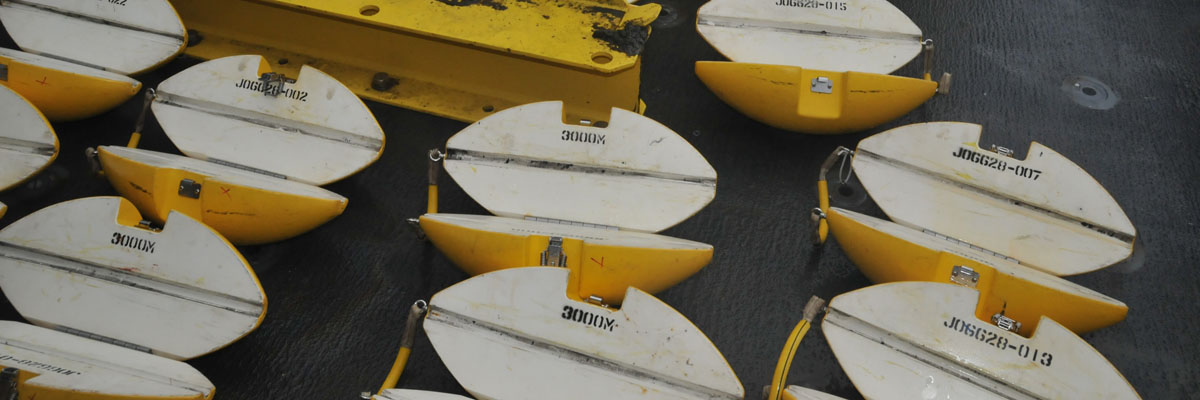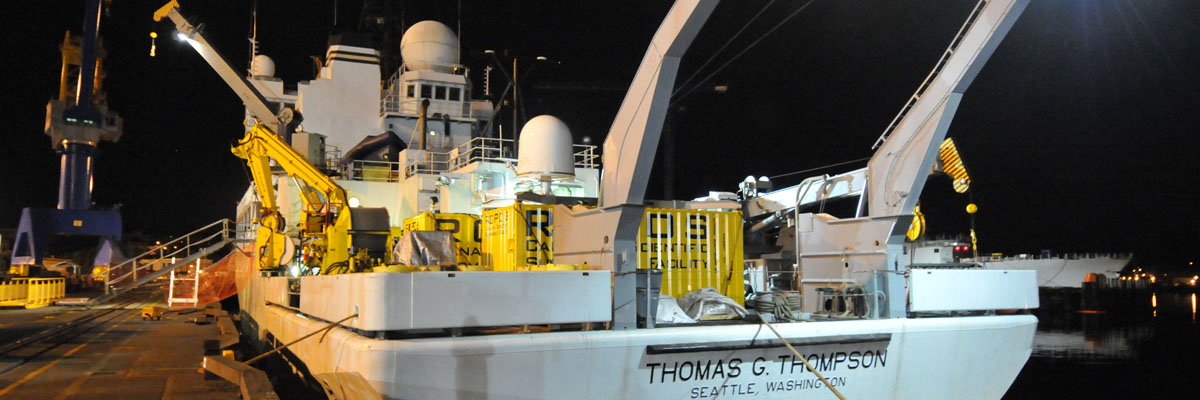4,000 m Configuration
Unlock all of ROPOS' capabilities
In its flagship configuration, ROPOS is a free-flying vehicle which uses an armored umbilical and is deployed through a crane-based Launch and Recovery System (LARS) that provides a safe and efficient deployment system for the vehicle.
LARS
Launch and Recovery System
Our self-contained craned based Launch and Recovery System (LARS) allows ROPOS to be launched without any A-frame or crane and to work in more severe weather conditions, up to sea state 6. With the LARS, ROPOS is launched over the side rather than the stern, placing the suspension point further forward and thus reducing the effect of vessel pitch. A docking head firmly secures ROPOS to the LARS before it is brought onboard greatly increasing safety and reducing deck crew requirements.
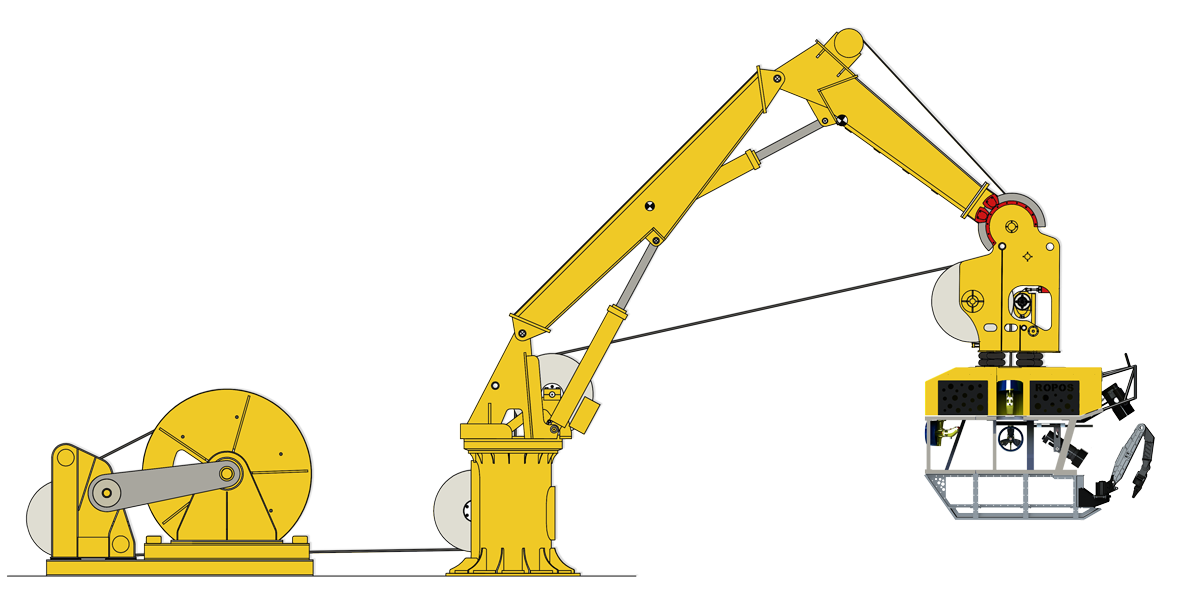
A-Frame
4000 m through an A-frame
On some ships, it may not be possible or practical to integrate our complete launch and recovery system. We can modify the 4000 m configuration to use the ship's A-frame. We have already built custom docking heads that bring many of the advantage of our LARS, such as the ability to securely latch the vehicle, to vessels such as the R/V Falkor and R/V Bigelow.
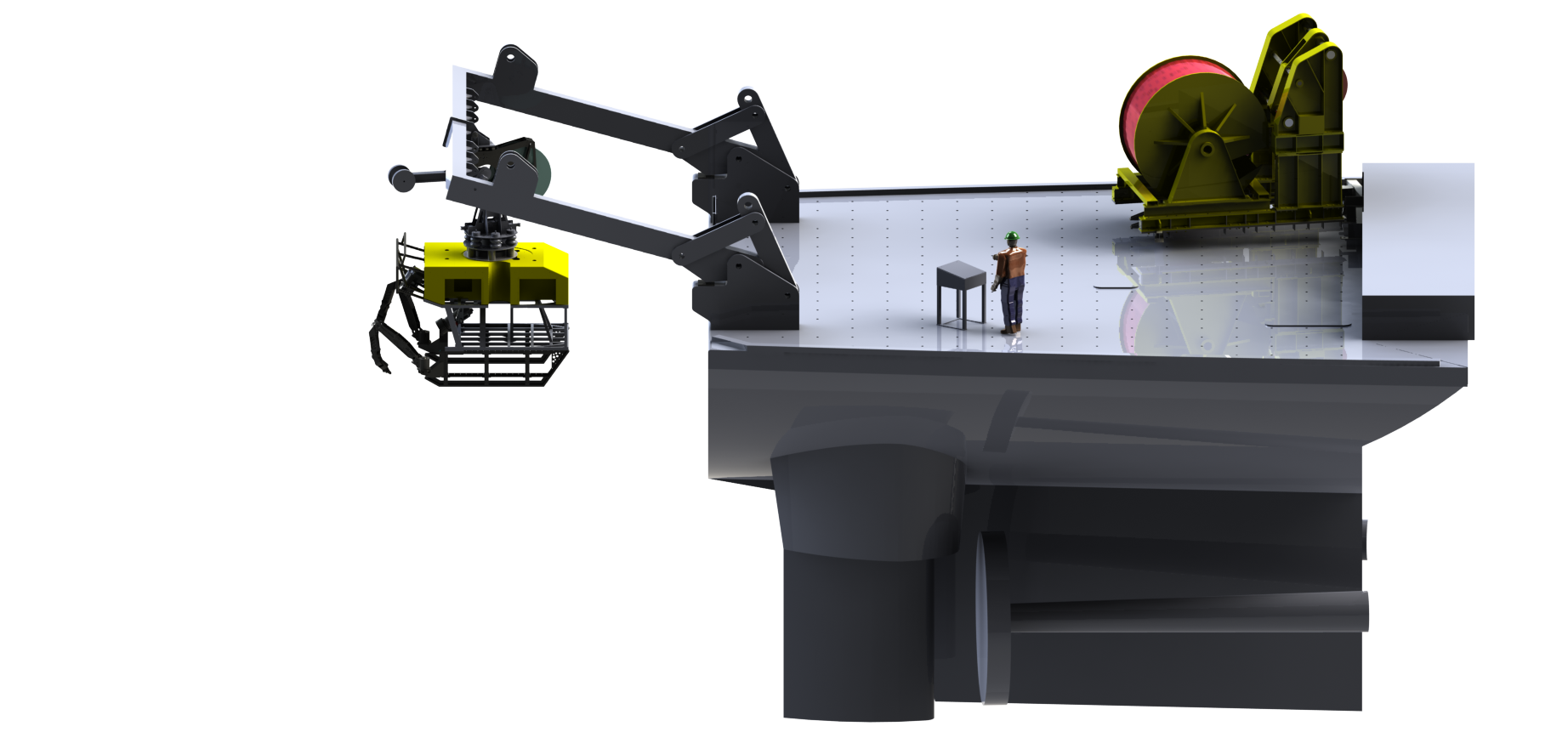
Tether Management
A 500 m work area
To give the ROV a work area of up to 250 m around vessel, up to 22 evenly spaced (2 m apart) “football” floats are attached to the umbilical to form a “catenary”. The image below shows the flexible work area achieved with the floats (depicted in green). Additionally, the “catenary” created by the floats decouples the ROV from the ship’s heave and helps with transits since the belly in the cable acts as a depressor.
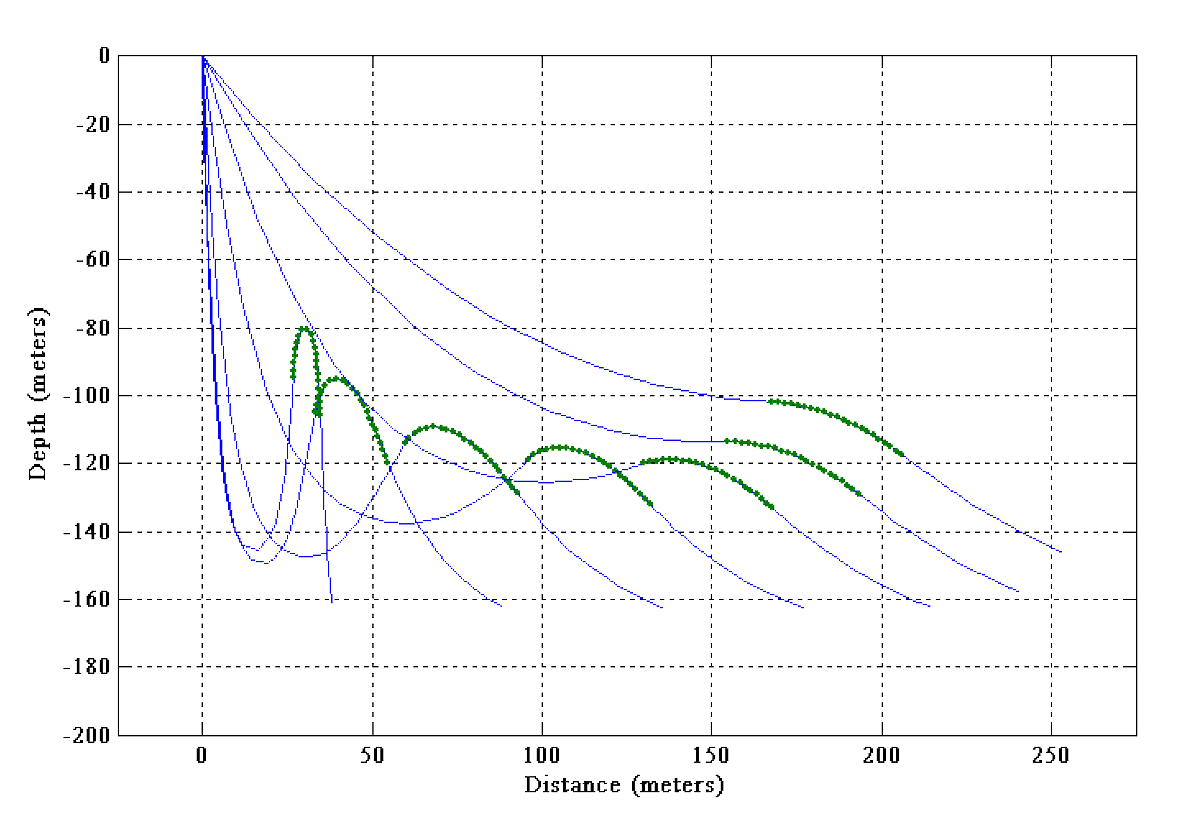
Vessels
Flexible Configurations
Our team has the knowledge and experience to integrate the ROPOS systems to most offshore research vessels. All of our systems have modular designs which allow for flexible deployment scenarios with minimal to no required modifications. The table below lists the vessels that have already or can be fitted with our 4000 m configuration.
| Mid-Depth Ready Vessels | |
|---|---|
| LARS Compatible |
|
| A-frame Compatible |
|
2. [The through-frame lift capability of the system past 3000 m. will diminish according to the operating depth and sea-state requirements. Contact us for more information.]↩
